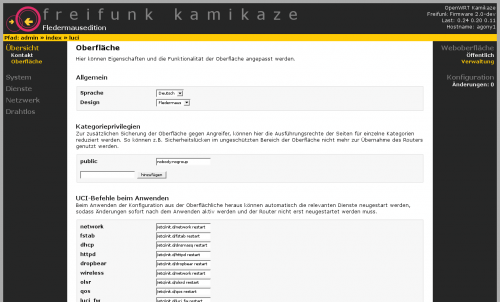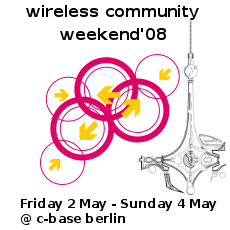The OpenWrt team (Cph) has announced a new version of its Linux distribution for embedded wireless devices named "OpenWrt Kamikaze 808 Release". I talked to Felix Fietkau already at the WCW. Unfortunately we did not have the time to do an interview at the end. But Cyrus from freifunk Halle gave a short showcase of his interface (in German). The OpenWrt team was also impressed by it and they now announce the enclosure of the Luci interface officially. Congratulations Cyrus!

It has been quite a while since OpenWrt had a new Kamikaze release. The developer team has decided that it is time to get things straight and focus on a new release. This release have the official name: OpenWrt Kamikaze 808 Release.
The schedule will look like this:
*Last day in July – final release candidate: 808 RC-1 808 RC-1 will be a feature freeze, and all changes after this point will be bug fixes.
*Last day in August – final release: OpenWrt Kamikaze 808 Release.OpenWrt Kamikaze 808 Release will focus on bringing the following:
– Firewall rewrite
– Broadcom 47xx running reliably with the new Kernel, not including wifi
– IMQ and Traffic shaping tested with newer kernels, especially 2.6.25
– Sysupgrade for more platforms (x86 is tested again)
– The new web interface (LuCI, Lua Configuration Interface)
– Attention towards the integration of security updates
– Package maintaining and updates between releases
– Testing, testing and lots of testing…The 808 Release will also include support for several new platforms/targets. (http://forum.openwrt.org/viewtopic.php?pid=69873 )


